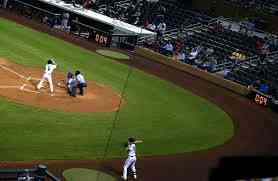 There’s a story here that is all gung ho in favor of a ML pitch clock that limits pitchers to 20 seconds between pitches.
There’s a story here that is all gung ho in favor of a ML pitch clock that limits pitchers to 20 seconds between pitches.
The writer shows the average times for the Royals pitchers last year, and only Bruce Chen averaged less than 20 seconds. He notes, however, that there wasn’t a pitch clock, that hitters were allowed more time to get ready than they presumably will if the pitcher is facing a clock, and the Royals other starters, Ventura and Guthrie, were just a hair over 20 seconds on average, so maybe wouldn’t be too rushed if the rule is adopted. All well and good.
I just wanted to report that after watching some games in the Arizona Fall League last November, in which the pitch clock was used, the main thing we noticed is that there were clocks everywhere. In order to make sure everyone knew how much time remained, there were clocks on the fence behind the catcher, on each dugout, and on the right and left field fences. Maybe it was the novelty, but the bright flickering light was a definite distraction. (The picture above shows the clocks on the first base side.)
And just as at a basketball game, there was almost as much suspense watching the pitcher beat the clock as there was seeing him work the batter. So, the clocks are ugly and distracting. Will they speed up the game?
Another point is that the clock is reset when the pitcher starts his rocker step. So, if a pitcher uses all 20 seconds to start his rocker step, his full windup and delivery will put him on a longer than 20 second pace.
With that in mind, if each pitch is made on average five seconds faster, a game with 250 pitches would save 1250 seconds. That’s 21 minutes or so, which would be quite an accomplishment, but would we even notice? I suspect that we wouldn’t. We would still be irritated by pitching changes for every batter in the later innings, in games aren’t all that close, and two minute breaks between half innings for commercials, and three minutes for the 7th inning stretch’s two songs–at least. These are the things that make baseball games seem slow and too long, and each is hard to address because it either is an important part of the competition strategically, or it is a money generator.
So if we’re really concerned about game length, let’s try another idea: Seven inning games.
